 |
||
|
||
| ||
Conroe First Tests: Flawless Victory IDF 2006: Intel Centrino Ready For Windows Vistà And HD DVD Tyan Introduces Dual-Xeon LV Server Board, New Servers ATI Unleashes Mobility Radeon X1800 XT Matrox Graphics announced Matrox EpicA that has innovative and practical multi-display features for financial, insurance and enterprise professionals. Matrox EpicA hardware will address thin client multi-display needs with fanless, dual and quad PCI, low-profile, and low-power consuming products.  Matrox EpicA software will reside on the server and will be compatible with leading remote connection technologies. Monitor-awareness allows a large resolution on the client to be divided as the user desires. Matrox EpicA will be available in Q2 2006. Source: Matrox Graphics
Conroe First Tests: Flawless Victory At Intel Developer Forum 2006 the journalists obtained the long-anticipated Conroe processors and tested them in a number of applications and benchmarks 4 months before their official announcement. In particular, they compared Conroe 2.67 MHz and AMD Athlon FX 60 overclocked to 2.8 GHz (an analog of FX 62). Motherboards were, respectively, a modified Intel D975XBK and DFI RD480. 1GB of DDR2 operated at 4-4-4 and 2-2-2/1T (DDR) respective timings. Also, both systems had "CrossFired" Radeon X1900 XT and Windows XP.  Multimedia encoding: Windows Media Video 9:
iTunes 6.0.1.3:
DivX 6.1:
Games: Unreal Tournament 2004 Bot Patch (1024*768):
Quake 4 - Time Demo (1024*768):
Half Life Source (lost_coast) - Time Demo (1024*768):
FEAR (CPU - max., graphics - average) - Time Demo (1024*768). Average FPS:
PCMark:
Thus, not the most powerful representative of Conroe series successfully won in all tests over the today's fastest desktop CPU from AMD. With time we'll see how this situation changes when AMD moves to Socket AM2 and DDR2 memory. It's also unclear how close to the beginning of Q3 Conroe processors will go on sale. But for now their prospects are rather optimistic. Sources: AnandTech, HEXUS.netIDF 2006: Intel Centrino Ready For Windows Vistà And HD DVD The IDF zero day in San Francisco turned into a kind of a notebook show at which the company demonstrated among other things the readiness of Napa-based (Core Duo) systems for some future technologies. For example they showed a widescreen notebook supporting and playing HD DVD movies: 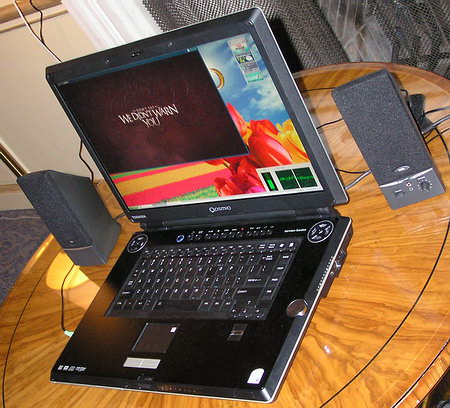 The notebook utilized integrated graphics of Intel 945GM Express, 1GB of RAM and Intel Core Duo CPU. However they underlined that Intel's single-core CPU wouldn't allow this machine to play HD DVD movies without frame losses. The second interesting machine was a similar notebook on i945GM, 1GB RAM of Intel T2300 (Core Duo, 1.66 GHz). 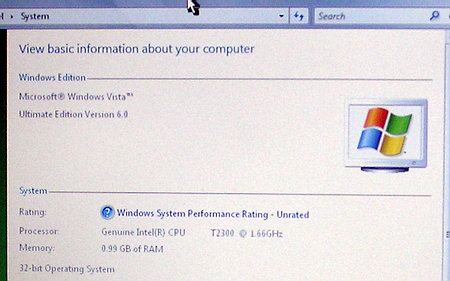 Such hardware configuration was good at handling the most advanced version of Windows Vista OS which required at least 1GB of RAM.  And again the integrated graphics of i945GM was quite enough to use at all the innovations of Vista interface, including 3D window operations, opacity, etc. Surely there was a large number of systems demonstrating the power of Core Duo over its predecessor Dothan (Pentium M). However, new comm possibilities were of more interest. Like this Skype handset: 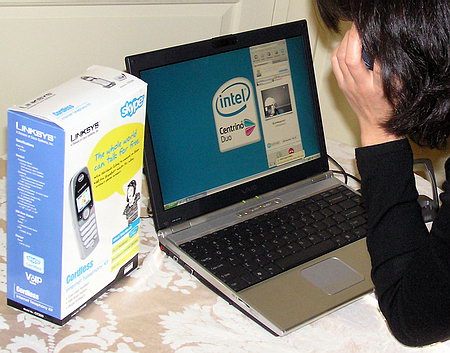 Note that was not just the audio, but video communication with a realtime data exchange. Of course, the system was optimized for Intel's dual-core platform. Even Mooly Eden, the main idea-monger of mobile processors like Intel Pentium M (Banias, Dothan) and Core Duo (Yohan), used this system and other Napa-based innovations with interest: 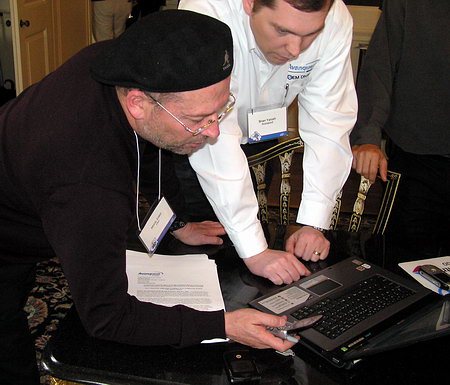 Source: Alex Karabuto (lx@ixbt.com), our own reporter at IDF
Tyan Introduces Dual-Xeon LV Server Board, New Servers Tyan introduced the Tiger i7520SD (S5365), a low-voltage power-efficient server motherboard for the mass market. The Tiger i7520SD (S5365) uses the Intel E7520 and ESB6300 chipset in combination with Intel's brand-new Dual-Core Intel Xeon Processor LV (codenamed "Sossaman"). Features of this new server motherboard include: 
The Tiger i7520SD (S5365) will sample in late Q1'06, and will reach mass production levels in mid-Q2'06. Two other novelties are new server platforms. For high-end performance servers which need expansive I/O and full-scale capabilities there is the Tempest i5000PX (S5380), and for entry to mid-range servers, the Tempest i5000VF (S5370) is the solution. Both the S5380 and the S5370 are based on Intel Xeon 5000 series processors (codenamed "Dempsey") with fast core speeds, high-ranking 64-bit technology, and dual core capabilities. Starting with the Tempest i5000PX (S5380), features of this full-sized server platform include:
The Tempest i5000VF (S5370) offers its own set of features to differentiate from its bigger brother, features such as:
Source: Tyan
ATI Unleashes Mobility Radeon X1800 XT ATI Technologies launched its 90nm Mobility Radeon X1800 series that offers a broad range of features including:
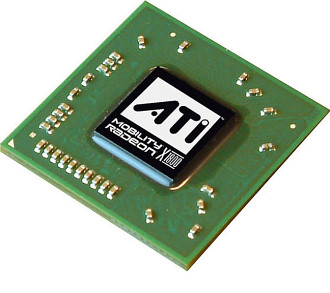 Notebooks with Mobility Radeon X1800 series of graphics processors are available starting March 7th. Source: ATI Technologies
Write a comment below. No registration needed!
|
Platform · Video · Multimedia · Mobile · Other || About us & Privacy policy · Twitter · Facebook Copyright © Byrds Research & Publishing, Ltd., 1997–2011. All rights reserved. |